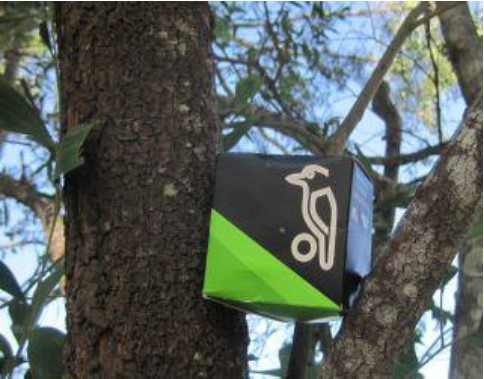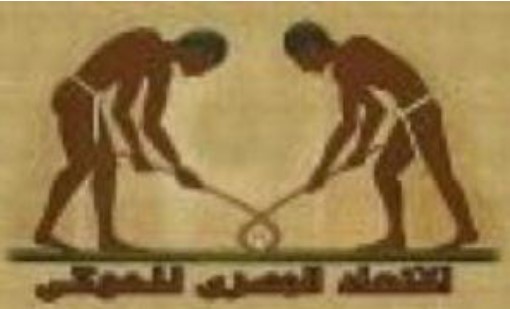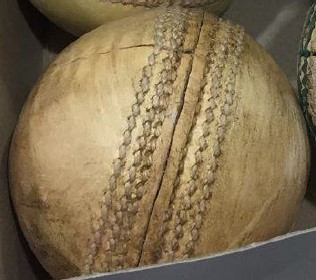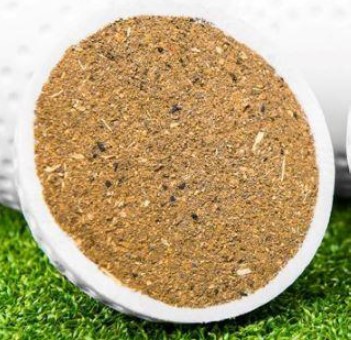Article by R A Hunter

Hockey-like games with a ball and a curved stick were played on every continent of the ancient world. The photo below was taken from the tomb of an Egyptian Prince dated 2000 BC. Balls were made from anything available: wool, leather stuffed with feathers, wood, bone, rubber, latex, stone.

Early settlers in Western Australia witnessed aboriginal people playing a game with a bent stick and a rounded ball made of dried sap from the native peach tree.
Hockey as it is played today started in England in the 1880s. The first ball was a cube made of rubber. The Teddington Club in south west London started playing the game with 11 players and old cricket balls. This was readily adopted elsewhere, and the modern game was born. Today the hockey ball and cricket ball are still the same 5.5 ounces in weight and 2.8 inches in diameter.
British soldiers took the game around the world, especially to Commonwealth countries. Hockey really took off in India which became India and Pakistan after separation in 1947. In the early days of Indian hockey, the ball was of cork or bamboo. These balls were suited to playing on dirt surfaces.
A white cricket ball with a seam was the popular choice in Australia. The lacquer and white colour did not last long, the ball soon becoming a creamy brown colour. Ingenious devices were invented to repaint the balls. Balls could be painted in a one or a two-stage process. An example of a one stage process where the whole ball was repainted at the one time was a nail on a string. The nail was driven into the ball and the other end of the string attached to something overhead so the ball would dangle.


Devices for the two-stage process of painting half a ball at a time included 3 nails not fully driven into a length of 4 inch by 2 inch timber or a wigwam structure.
Other countries used a leather ball without a seam. The Tugite ball was made in Glasgow in the 1950s. This ball was made “to scientific construction, workmanship and quality materials”. It was approved by the International Hockey Board for use in international and other matches.
The advent of synthetic surfaces rang the death knell for the leather ball. On water-based surfaces, the leather case absorbed water and became swollen. It was like hitting a sodden ball of wool. Hockey Australia asked Kookaburra to develop a ball suitable for play on synthetic surfaces. This was in 1982 and the Kookaburra dimpled ball has been used in every Olympic Games and virtually all other international tournaments since 1984.

Better quality hockey balls like the Kookaburra have a cork core with an outer cover of hard plastic. Less expensive balls that are commonly used for practice have hollow centres. The hard-plastic coat is thick enough so the ball weighs the mandatory 5.5 ounces. On impact, the rebound force with a Kookaburra ball is greater than that of a hollow centred ball so the Kookaburra travels faster initially and for a greater distance.
Have you ever wondered about how much energy causes that bruise when a hockey ball collides with an unprotected part of your body? The energy that a moving object imparts when it collides with a stationary object can be calculated using formulae learnt in high school physics. Food also contains energy that is used as fuel for the human body. The energy contents of individual foods are readily available. Some simple mathematics show that for a hockey ball moving at speed, the same energy is transferred to soft tissue as that from 2.6 meat pies or 2 Big Macs. So, would you rather get a decent whack with a hockey ball or eat 2.6 pies? The energy you absorb is the same.
The dimpled ball has aerodynamic properties that make it run better than a smooth surface ball on water-based surfaces. Its aerial performance is also superior to that of a smooth ball. This is important because the modern game is played in the air as well as along the ground. There are also reports that the dimpled ball allows the skilled player to control the ball better, presumably because of the aerodynamic properties mentioned above. The smooth surface balls are more than adequate on grass and on sand-based synthetic surfaces.
Before discussing the effect of the inner core of a hockey ball on its performance, it is necessary to introduce Newton’s Third Law of Physics which is: for every action there is an equal and opposite reaction. Those of you who play golf and follow the promotional literature on the annual release of the latest and greatest golf ball will be familiar with activation of the core and the greater distance this brings. This means that a solid hit not only depresses the outside coat on impact but also the core. The force of depression is reciprocated by a rebound force which imparts energy to the ball increasing the distance travelled.

Better quality hockey balls like the Kookaburra have a cork core with an outer cover of hard plastic. Less expensive balls that are commonly used for practice have hollow centres. The hard-plastic coat is thick enough so the ball weighs the mandatory 5.5 ounces. On impact, the rebound force with a Kookaburra ball is greater than that of a hollow centred ball so the Kookaburra travels faster initially and for a greater distance.
Have you ever wondered about how much energy causes that bruise when a hockey ball collides with an unprotected part of your body? The energy that a moving object imparts when it collides with a stationary object can be calculated using formulae learnt in high school physics. Food also contains energy that is used as fuel for the human body. The energy contents of individual foods are readily available. Some simple mathematics show that for a hockey ball moving at speed, the same energy is transferred to soft tissue as that from 2.6 meat pies or 2 Big Macs. So, would you rather get a decent whack with a hockey ball or eat 2.6 pies? The energy you absorb is the same.